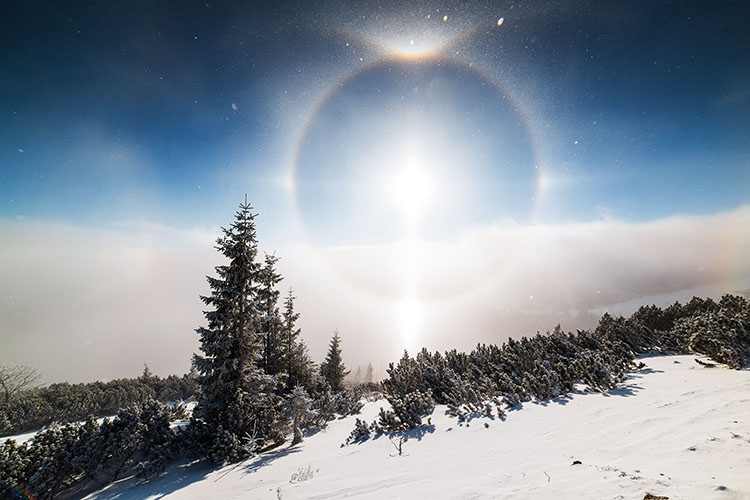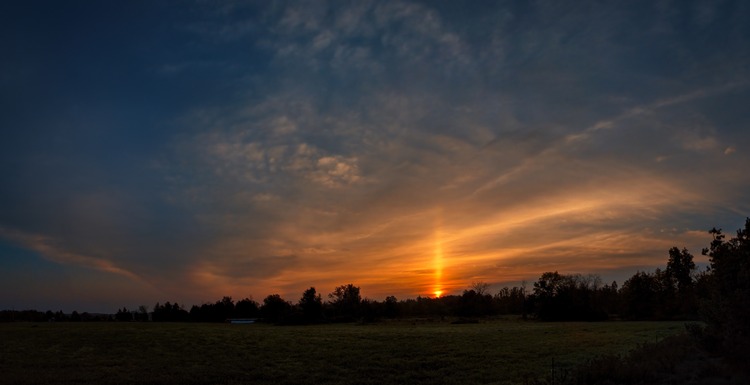
Optical atmospheric phenomena such as ice halos, sun dogs and ice pillars caused by ice crystals
GEOGRAPHICAL PHENOMENA #1: ICE HALOS
THE REMARKABLE EXPLAINED
By
Observers have been captivated by ice halos – the occasional rings of light that surround the sun and moon – for millennia. These optical phenomena are caused by the interplay of light and ice crystals suspended high in the Earth’s atmosphere.
The tiny ice crystals that lead to the formation of ice halos are located in cirrus and cirrostratus clouds in the upper troposphere (five to ten kilometres above the Earth’s surface). One of the more common forms of ice halo is the 22° halo, in which a ring of light surrounds the sun or moon. It gets its name from the angle of refraction of the light as it passes through the ice crystals. There’s also a rarer 46° halo.
Light from the sun or moon is reflected off and refracted through hexagonal ice crystals, which act as both mirrors and prisms, in different directions. Light rays enter through one face of the crystal and escape through another, twisting and dispersing as they do so. The variety of shapes and sizes that these halos can take is influenced by both the constantly shifting locations of the ice crystals and the various sizes, shapes and orientations of the crystals.
Since ancient times, halo watchers have attempted to analyse and even forecast the weather using the displays, with the earliest reports of ice halos coming from the Babylonians, who believed that the halos were a precursor to precipitation and storms. This type of weather lore spans many cultures, from Aristotle in ancient Greece to the Chinese Qin dynasty, in which 26 technical terms for solar halo phenomena were formulated as early as 200 BCE.
Scientifically, there’s no evidence of a connection between ice halos and stormy weather. However, the cloud type that allows halos to form (cirrus) is often responsible for rainy days.

Sun dogs, also called parhelio, are another atmospheric optical phenomenon, which often accompany ice halos. They consist of a bright spot on one or both sides of the sun. These bright patches of light are created by sunlight refracting and reflecting through hexagonal ice crystals, similar to those responsible for ice halos. They can often be observed in cold regions around the world where cirrus clouds prevail, particularly in northern latitudes and polar regions.

Light pillars (also known as sun pillars) are also caused by light passing through ice crystals in the atmosphere. They appear as vertical pillars or columns of light rising from the Sun near sunset or sunrise.
These pillars appear only when the Sun is within six degrees of the horizon. The crystals orient themselves near-horizontally as they fall or float through the air, and the width and visibility of a sun pillar depends on crystal alignment.
Light pillars can also form around the Moon, and around street lights or other bright lights. Pillars forming from ground-based light sources may appear much taller than those associated with the Sun or Moon. Since the observer is closer to the light source, crystal orientation matters less in the formation of these pillars.




